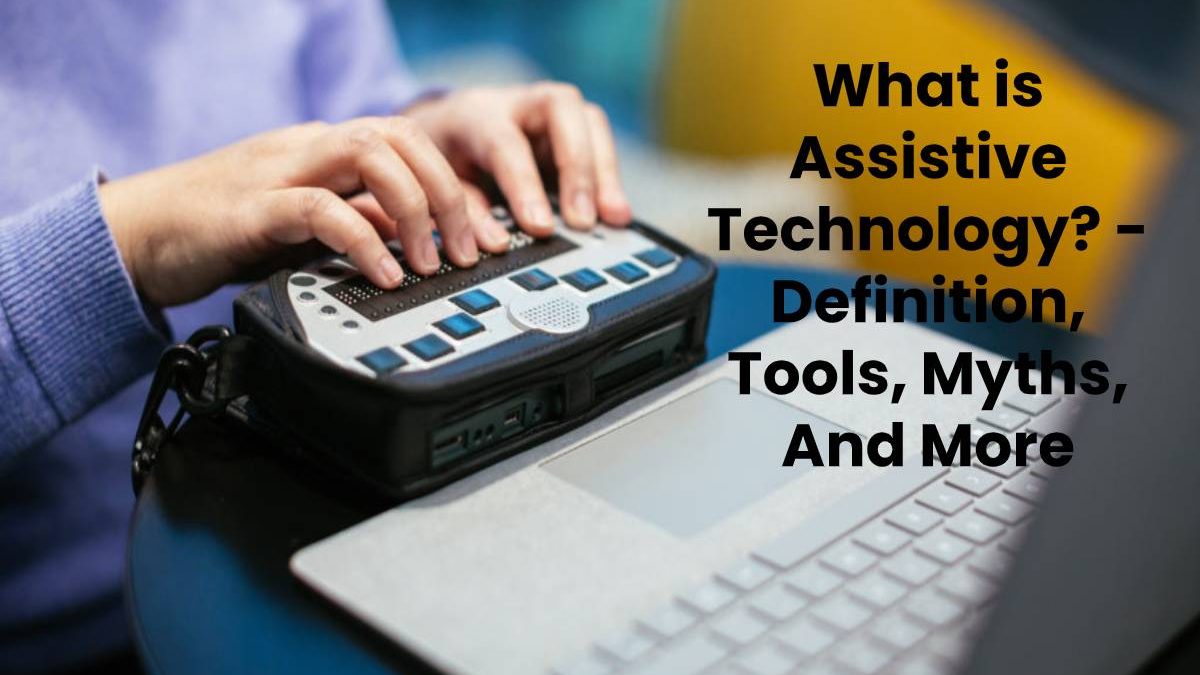Table of Contents
Definition Assistive Technology
Assistive technology is devices that assist, to adapt, and rehabilitate people with disabilities or the elderly population. People who have disabilities often find it challenging to perform their daily activities independently.
It is a device, software, or tool that helps people overcome their challenges.
A few examples of assistive technology are text-to-speech and word prediction.
This device also includes low-tech tools, such as pencil holders.
There are specific technological tools that can help people who think and learn differently? These tools, called assistive technology (AT), are often inexpensive and easy to use.
How can children and adults benefit from these tools?
Basics
It is any software or device that helps people overcome challenges so that they can learn, communicate, and function better. A wheelchair is an example. So is the software that reads the text out loud on a computer. Or a keyboard for someone who has difficulties with handwriting.
These tools can help people overcome their challenges and, at the same time, take advantage of their strengths. They are especially important in children who have learning difficulties, whether in reading, writing, math, or some other area.
This device can help them progress in school and life, strengthening their confidence and independence.
There are many myths about assistive technology. Some mistakenly believe that using it is “cheating.” Others fear that children who use it may become too dependent on it.
Myths
One of the myths is that using assistive technology will prevent children from learning academic skills. That’s not true. Experts agree that listening to audiobooks does not prevent children from learning to read.
While assistive technology has many benefits, keep in mind that you cannot “cure” things like dyslexia or ADHD. Nor can it replace good teaching.
Examples
Despite the word “technology,” not all tools are high tech. Assistive technology includes many versatile and straightforward tools, such as bookmarks and organizers. An example of assistive technology is a pencil holder.
However, many tools are high tech, and due to technological advances, the tools are now available on a variety of platforms:
- Laptops
- desktops
- Mobile devices
- Smartphones
- tablets
- “Chromebooks” ( Chrome browser used on any device).
Examples of high-tech tools include text-to-speech (TTS), dictation (voice-to-text), and word prediction. But there are hundreds of assistive technology tools that can help with learning challenges. For more examples
- This for reading.
- The writing assistance technology.
- This technology for mathematics.
- and for listening comprehension.
Some of these tools are free. Some get integrated into mobile devices.
How to find the right assistive technology tool
With so many of these technology tools available, finding the right one can be overwhelming. A good approach is to choose assistive technology is the difficulty. For example, if a child has problems with writing, try dictation technology. As the child speaks, the words appear on the screen.
People who have access to a mobile device, such as a smartphone or digital tablet, can add apps for assistive technology tools. Through the technology search engine, you will find apps for children of different ages, which has been approved by experts.
- Apps to help young children, teenagers with the organization.
- to help take notes.
- Apps that help young children to develop self-control.
- Apps to help preteens and teenagers develop self-control.
- Meditation apps for children.
- Websites, apps, and games that help to learn to type.
People who have access to a laptop or desktop computer can use assistive technology software for reading, writing, and math. Those who have access to a Chromebook or Chrome browser can review the Chrome tools that help with various challenges.
If you don’t know where to start, text-to-speech is an excellent first step. Text-to-speech converts electronic text into spoken words so that people can listen to digital books. It can make a big difference in people who have problems with reading or attention.
Key points
An excellent way to choose an assistive technology tool is to focus on a specific difficulty or need for learning.
Text-to-speech is generally an excellent first choice of this technology to try.

